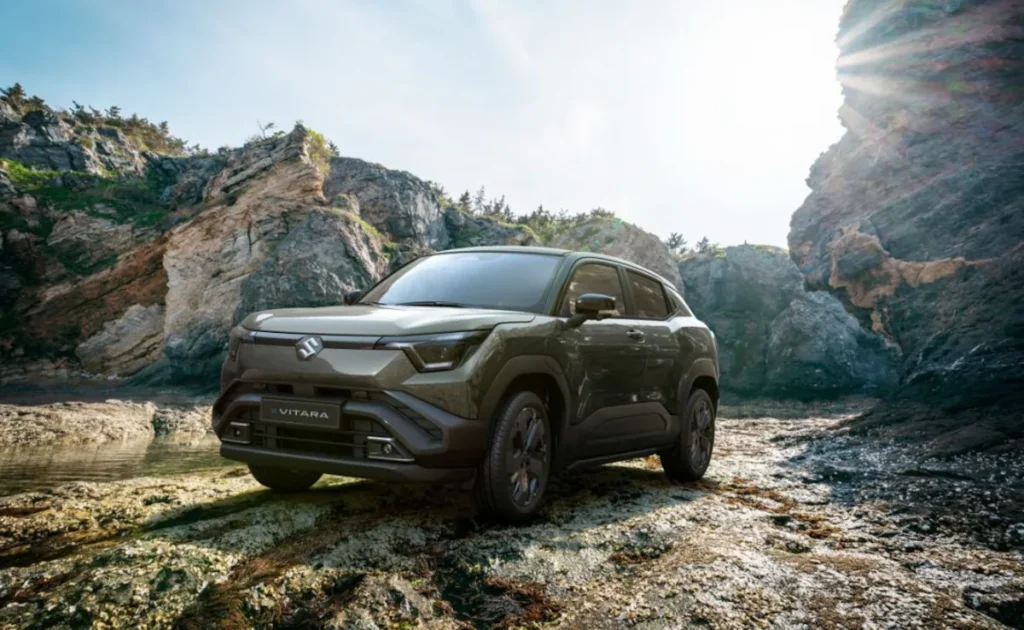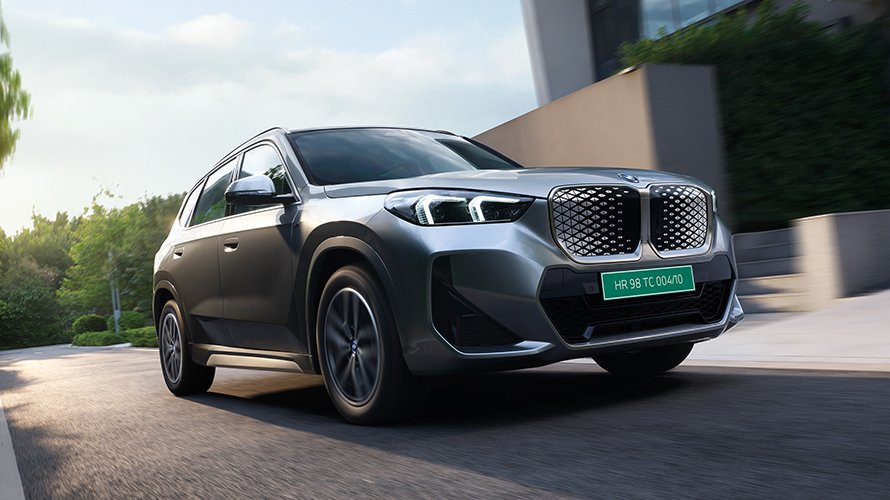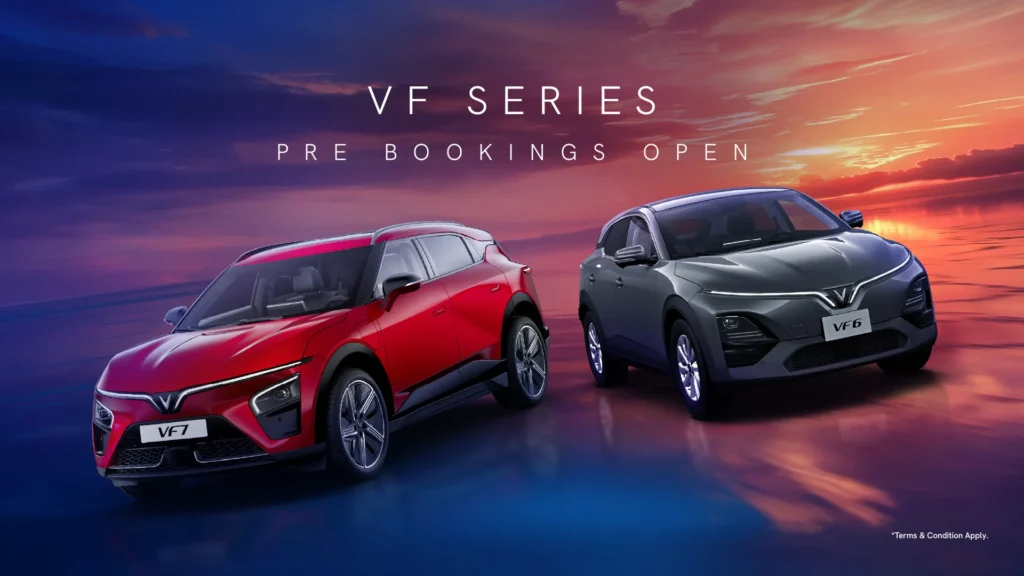India’s electric vehicle (EV) market is surging, with sales surpassing 100,000 units in the first eight months of 2025, driven by rising fuel prices, improved charging infrastructure, and government incentives like FAME-III. Mass-market giants—Maruti Suzuki, Tata Motors, Toyota, Kia, and Hyundai—are gearing up to capitalize on this momentum with a slew of exciting EV launches. While Tata leads with models like the Nexon EV and Punch EV, Maruti is poised to enter the segment with its first-ever EV. Below, we spotlight the five most anticipated electric cars set to hit Indian roads in 2025 and early 2026, blending affordability, range, and cutting-edge features to redefine sustainable mobility
1. Maruti Suzuki e-Vitara
Expected Launch: September-October 2025
Price: ₹20-25 lakh
Maruti Suzuki, India’s largest carmaker, is finally entering the EV arena with the e-Vitara, a compact electric SUV unveiled at EICMA 2024 and slated for a debut at Bharat Mobility Expo 2025. Built on the HEARTECT-e platform co-developed with Toyota, it’s produced at Suzuki’s Hansalpur plant in Gujarat, with exports already underway to Europe, where it earned a 4-star Euro NCAP rating.
Specs: Offers two battery packs—49kWh (142 bhp, 189 Nm, front-wheel drive) and 61kWh (172 bhp, 189 Nm for FWD; 181 bhp, 300 Nm for AWD). The 61kWh variant claims over 500km range (MIDC), ideal for urban and inter-city drives. Batteries are sourced from BYD, ensuring cost-efficiency.
Features: Includes a 10.25-inch touchscreen, 10.1-inch digital cluster, wireless Apple CarPlay/Android Auto, ventilated seats, Level-2 ADAS, seven airbags, and a panoramic sunroof.
Why It’s Anticipated: Maruti’s vast network (2,500+ touchpoints) and 85% localization promise competitive pricing. It targets the Hyundai Creta EV and Tata Curvv EV, appealing to families seeking safety and value. Production constraints due to rare earth supply issues may delay rollout, but excitement remains high.
2. Tata Sierra EV
Expected Launch: October 2025
Price: ₹20-25 lakh
Tata Motors, commanding 40% of India’s EV market, is reviving the iconic Sierra as an electric SUV, first showcased at Bharat Mobility Global Expo 2025. Built on the Gen-2 Acti.ev platform shared with the Harrier EV, it blends retro-modern styling with robust performance.
Specs: Likely to feature 65kWh and 75kWh battery packs, delivering over 500km range. Single- and dual-motor options offer flexibility, with the top AWD variant producing up to 200 kW (268 bhp).
Features: Expected to include a 12.3-inch touchscreen, Level-2 ADAS, terrain response modes, and a premium cabin with 5- or 4-seater layouts.
Why It’s Anticipated: The Sierra’s nostalgic design, combined with Tata’s EV expertise, positions it as a rival to the Mahindra XEV 7e and Hyundai Creta EV. Its export potential and local production make it a game-changer for urban professionals and adventure enthusiasts.
3. Toyota Urban Cruiser EV
Expected Launch: Late 2025
Price: ₹22-27 lakh
Toyota’s Urban Cruiser EV, a rebadged Maruti e-Vitara, leverages the same HEARTECT-e platform and Gujarat production line. Showcased alongside the e-Vitara, it targets premium buyers with Toyota’s signature reliability and hybrid expertise.
Specs: Shares the e-Vitara’s 49kWh (142 bhp) and 61kWh (172 bhp FWD, 181 bhp AWD) battery options, with a 500km+ range. Fast-charging (80kW DC) ensures practicality.
Features: Expect a Toyota-tuned interior with a 10.25-inch infotainment system, Level-2 ADAS, seven airbags, and premium upholstery. It may add hybrid-like efficiency modes for better range.
Why It’s Anticipated: Toyota’s brand loyalty and service network make it a strong contender. Priced slightly above the e-Vitara, it appeals to buyers seeking a premium compact EV with global credentials, competing with the Kia Syros EV.
4. Kia Syros EV
Expected Launch: December 2025
Price: ₹15-20 lakh
Kia is expanding its EV portfolio with the Syros EV, a compact electric hatchback based on the Hyundai i20 platform. Set to debut by year-end, it aims to undercut pricier SUVs while offering urban-friendly dimensions and tech.
Specs: Likely to use a 42kWh or 49kWh battery (sourced from Hyundai), delivering 350-400km range. A single front motor produces around 134 bhp, with 80kW fast-charging support.
Features: Anticipated to include a 10.25-inch touchscreen, wireless connectivity, Level-2 ADAS, six airbags, and a panoramic sunroof. Its compact size (under 4m) qualifies for sub-4-meter tax benefits in India.
Why It’s Anticipated: Positioned below the Carens Clavis EV (₹16 lakh), the Syros EV targets younger buyers seeking style and efficiency. It competes with the Tata Tiago EV and Citroën ë-C3, leveraging Kia’s design flair and Hyundai’s EV tech.
5. Hyundai Creta EV
Expected Launch: Early 2026
Price: ₹20-25 lakh
Hyundai is electrifying its bestselling Creta SUV, with the Creta EV spotted testing globally and confirmed for a 2025-26 India launch. Built on a modified K2 platform, it retains the ICE Creta’s bold design while integrating advanced EV tech.
Specs: Expected to feature a 55-60kWh battery, offering 450-500km range. A single-motor RWD setup (221 bhp, 350 Nm) and dual-motor AWD (315 bhp, 605 Nm) provide versatility. Fast-charging (100kW DC) ensures quick top-ups.
Features: Includes dual 10.25-inch screens, Level-2 ADAS, ventilated seats, a 360-degree camera, and six airbags. Its spacious cabin mirrors the ICE Creta’s appeal.
Why It’s Anticipated: The Creta’s popularity (over 10 lakh units sold) ensures strong demand. Priced to rival the e-Vitara and Curvv EV, it’s poised to dominate the mid-size EV SUV segment with Hyundai’s proven EV credentials (e.g., Ioniq 5).
Why These EVs Matter
India’s EV market is projected to hit 30% penetration by 2030, fueled by government subsidies, a growing charging network (100,000 stations targeted by 2025), and consumer demand for sustainable options. These five EVs address diverse needs:Affordability and Reach: Maruti and Tata leverage high localization (85-90%) to keep prices competitive, with the e-Vitara and Sierra EV targeting ₹20 lakh.
Premium Appeal: Toyota and Hyundai cater to buyers seeking luxury and reliability, while Kia’s Syros EV offers a stylish, budget-friendly hatch.
Infrastructure Readiness: Ranges of 400-550km and fast-charging support align with India’s improving highways and urban chargers.
Safety and Tech: All models feature Level-2 ADAS and multiple airbags, with the e-Vitara’s 4-star Euro NCAP rating setting a benchmark.
Challenges Ahead
Despite the excitement, challenges loom. Limited fast-charging infrastructure outside metros, high battery import duties (if localization lags), and competition from Chinese brands like BYD and MG (e.g., Windsor EV) could impact adoption. Maruti’s delayed e-Vitara launch and Tata’s supply chain constraints highlight production hurdles.
Conclusion
The e-Vitara, Sierra EV, Urban Cruiser EV, Syros EV, and Creta EV represent a transformative wave for India’s EV landscape in 2025-26. With ranges exceeding 450km, advanced ADAS, and prices starting at ₹15 lakh, these models cater to India’s diverse buyers—from urban youth to families. Maruti and Tata’s local manufacturing, Toyota’s reliability, Kia’s style, and Hyundai’s tech prowess ensure a competitive showdown. As India races toward a greener future, these EVs are set to redefine the roads.



